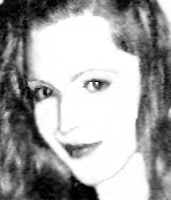Today, I'm delighted to hand over my blog to Jade Varden, a YA author who has published two novels in her Deck of Lies series, to explain how she gets the most out of her writing time.
Take it away Jade...
Take it away Jade...
Every Great
Book Begins with Pre-Writing
By Jade
Varden
Every book
begins with an idea. Writers might ask themselves a question one day, and
suddenly an entire book series is born. A dream, a line in a song, a TV
commercial, a news report -- they’re all capable of inspiring great literary
works. Before you ever write a word, you’ve already got the makings for a
fantastic book. But too many writers skip a necessary step between idea and
book-writing: pre-writing. The idea is just the beginning of the pre-writing
process. Before you sit down to type, you’ve got to stop and think.
Pre-Writing:
A Secret Writing Technique
Would you sit
down to make a dress without a pattern? Cook dinner without at least some sense
of a recipe? You can’t sit down to write a book with only a few random,
scattered ideas in your head. Writing will go much smoother if you have a plan
to follow, if your thoughts are organized, if know where you’re going
with the story. That’s where pre-writing becomes so important.
Every book begins
with an opening scene. Think about the characters you need to introduce, what
you want to say about them, how you want the reader to perceive them.
Pre-writing is all about imagining. Imagine that opening scene like it’s
playing out before you. See the setting and the characters interacting within
it inside your mind. If you can see the scene in your head, it’ll be much
easier to write later. Take note of how the characters are moving around in the
space, what they’re saying to each other. When you can hear your
characters talking to each other, you can make a lot of little tweaks to your
dialogue so it sounds more real. Once you sit to write the scene, you only have
to access the memory.
Imagining the
scene makes it much easier to add vivid details to your writing, and helps you
stay on track plot-wise. You know what needs to happen, and instead of
re-writing and struggling through a scene several times on paper you can face
the keyboard with a few solid ideas of how you need to get there.
I pre-write just
about every scene I’ve ever put into my books; otherwise, I find myself going
back and changing everything several times before I can move on to something
else. Every time I find myself feeling stuck, or if I’m confused about where I
need to go next, I immediately stop typing and stand up. Instead of trying to
write my way through the scene, I pace around and I think it out. Instead of
wrestling with the scene on the computer screen, I subdue it on my own private
movie screen inside my head. Ideas are much easier to move around and edit than
printed words, no matter how fast you type.
About Jade:
Jade Varden writes young adult novels for
teen readers. When she’s not working on her books, Jade contributes freelance
fashion articles to VAR magazine, and blogs practical writing tips for authors
who self-publish.
Follow her on Twitter @JadeVarden.
You can also find Jade, here:
Jade's blog
Jade on Amazon
Jade at B&N
Jade on Smashwords
Follow her on Twitter @JadeVarden.
You can also find Jade, here:
Jade's blog
Jade on Amazon
Jade at B&N
Jade on Smashwords


















